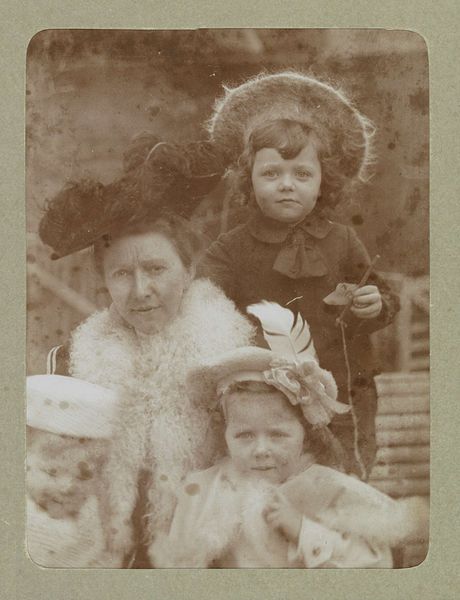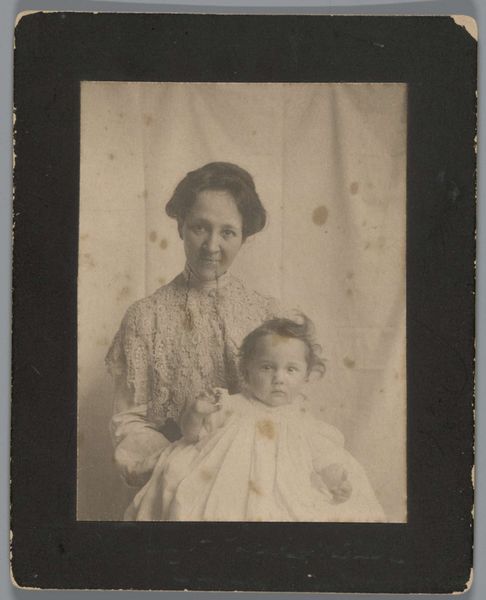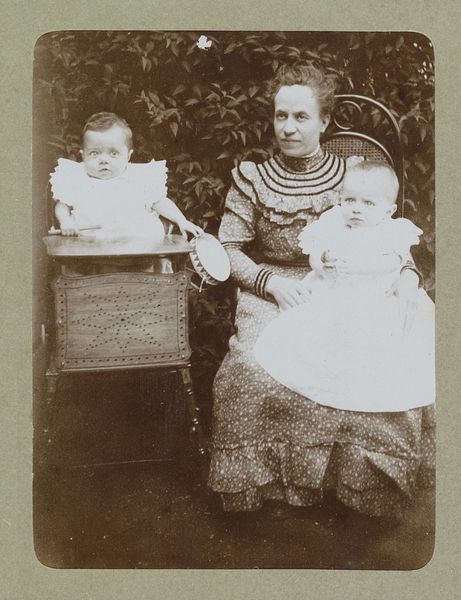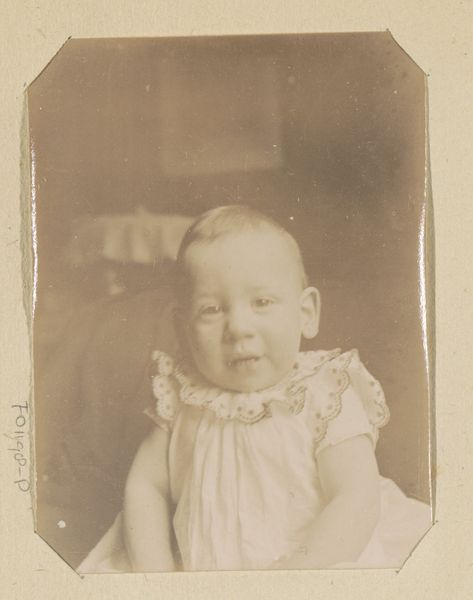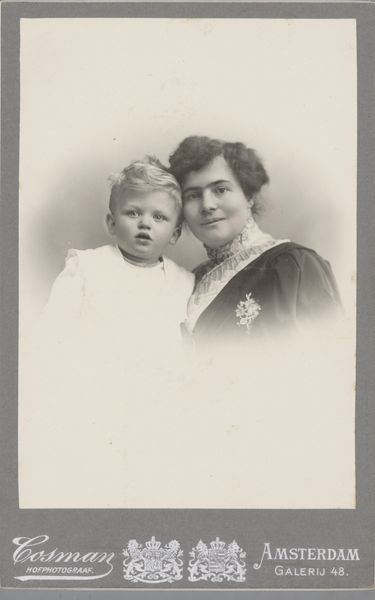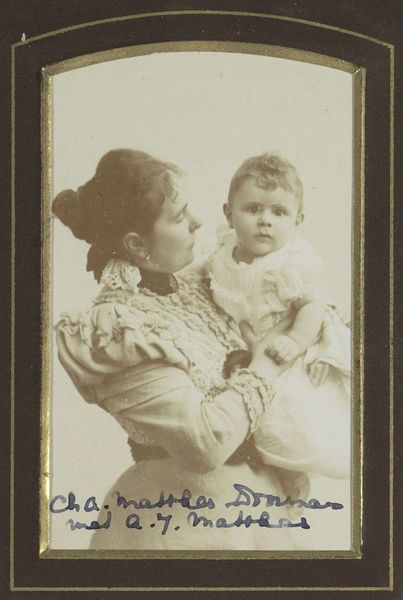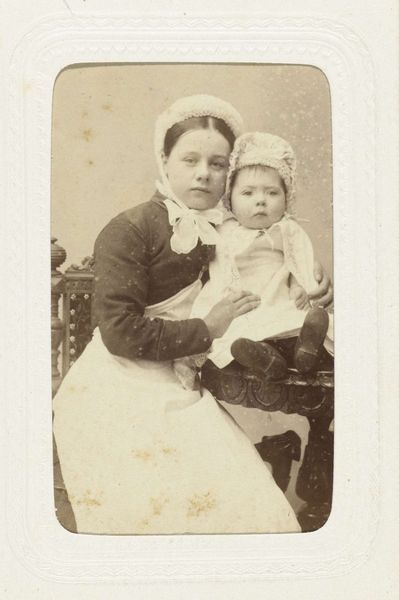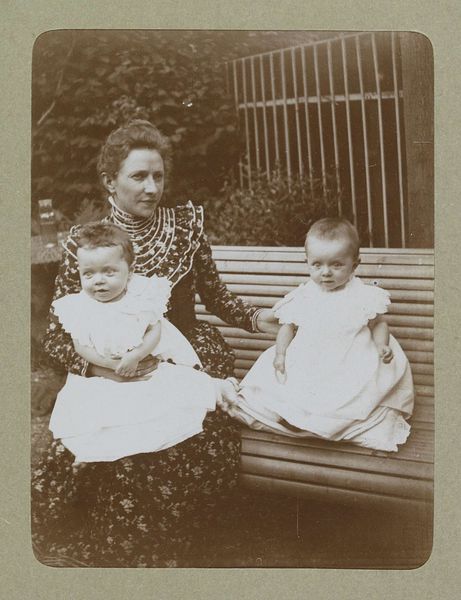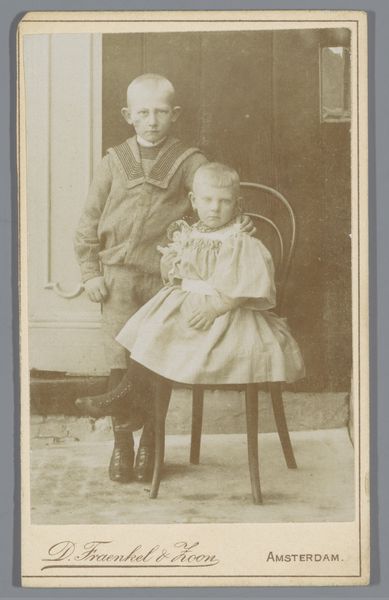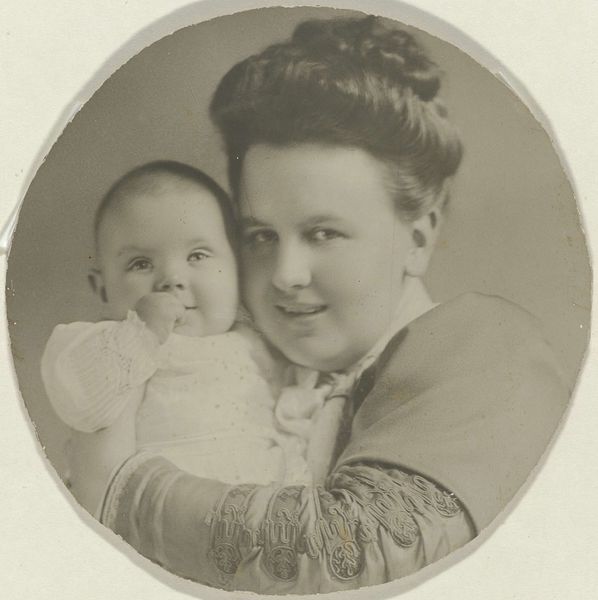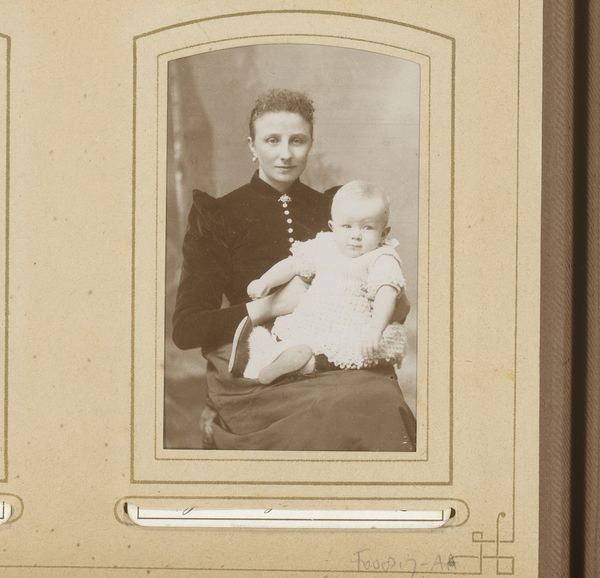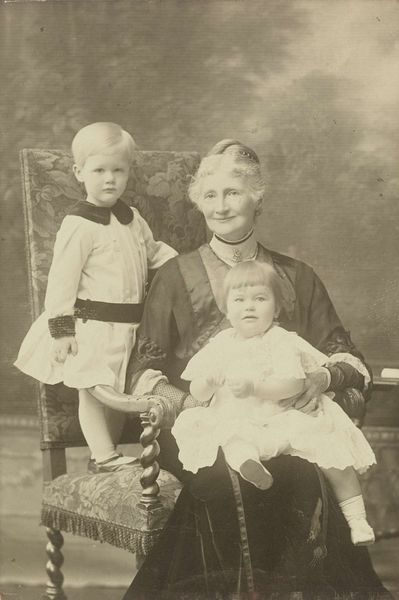
Portret van een vrouw met bontsjaal en hoed met kind in mantel met bontkraag en hoed, waarschijnlijk Han van der Kop en zijn moeder W.G. Hoogendijk c. 1903 - 1911
0:00
0:00
photography
#
portrait
#
photography
#
group-portraits
Dimensions: height 73 mm, width 98 mm
Copyright: Rijks Museum: Open Domain
Editor: Here we have a photograph by Willem Carel van der Kop, likely taken between 1903 and 1911. It's titled "Portret van een vrouw met bontsjaal en hoed met kind in mantel met bontkraag en hoed, waarschijnlijk Han van der Kop en zijn moeder W.G. Hoogendijk"—a portrait of a woman and child dressed in furs. The sepia tone gives it such a nostalgic and almost dreamlike quality. What symbols or historical echoes do you find resonate most powerfully in this image? Curator: Immediately, the matching furs strike me as powerful symbols of status and aspiration in the early 20th century. But there's more, isn’t there? The child's gaze, so direct, almost confronts the viewer. This was an era deeply concerned with representation, with projecting a certain image. Does the formality of dress feel constricting or empowering to you? Editor: I suppose both. There’s something confining in all those layers, yet they also seem to declare a certain position. It’s interesting how much clothing can communicate. Curator: Exactly! Consider the *types* of furs and adornments. This would've signalled belonging to a particular social class, an understanding of unspoken rules. Can you see anything that gives you more information about these two characters? The pose itself suggests the mother and child presenting themselves, perhaps aware of their place in society, wanting to affirm it through the very act of portraiture. The woman has a sailor style, with bands in her sleeves and a stern expression. Is she perhaps reminding her son (and herself) to be tough, not crumble under expectation? The photo makes me think of power dynamics between them, too. Editor: I hadn’t considered the subtle messaging within their attire and their faces! Thank you, it does give you so much insight to remember these are representations as much as they are people. Curator: Indeed, and like any portrait or even any symbol in history, context is everything!
Comments
No comments
Be the first to comment and join the conversation on the ultimate creative platform.
